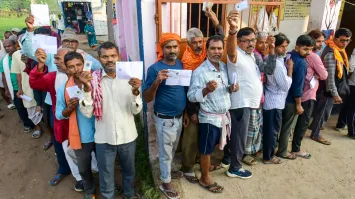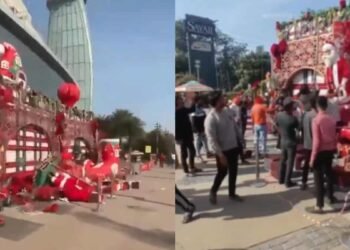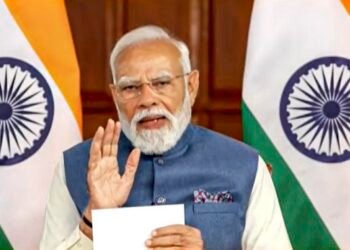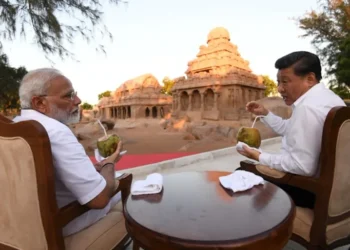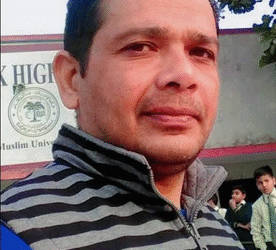The RJD-led INDIA bloc is gaining traction among youth and EBC voters, turning several regions into tight three-cornered fights.
BY PC Bureau
November7, 2025: The first phase of the Bihar Assembly Elections 2025, held on November 6 across 121 constituencies in 18 districts, witnessed a record voter turnout of nearly 67 % ( estimated revised) — the highest since 1951. This surpasses both the 62.57% turnout in 2000 and the 57.29% in the first phase of 2020, marking a 7–8% rise and reflecting renewed political engagement in one of India’s most politically charged states.
The surge comes amid a triangular contest among the ruling NDA, the INDIA bloc (Mahagathbandhan), and Prashant Kishor’s Jan Suraaj Party (JSP). While the NDA attributes the turnout to women’s support for welfare schemes, the INDIA bloc interprets it as youth anger over unemployment. Emerging patterns suggest gains for JD(U) and the INDIA bloc in several regions, with BJP facing erosion in urban pockets. The turnout has set the stage for a fiercely fought second phase on November 11.
Bihar’s 2025 Assembly elections, covering 243 seats, represent a high-stakes referendum on governance, employment, and caste-based politics in a state where 58% of voters are under 35. The first phase spanned Mithilanchal, Magadh, and Seemanchal, deciding the fate of 1,250 candidates, including heavyweights such as RJD’s Tejashwi Yadav and BJP’s Samrat Choudhary.
Out of 3.75 crore eligible voters (1.98 crore men and 1.76 crore women), women marginally outnumbered men at polling booths. The participation of 10.72 lakh first-time voters, including 7.78 lakh aged 18–19, underscores the youth factor.
READ: Ajit Pawar’s Son Linked to Pune Land Scam: ₹1,800-Crore Plot Sold for ₹300 Crore
The high turnout also reflects cleaner electoral rolls following the deletion of 47 lakh duplicate entries and the success of aggressive voter awareness campaigns. However, sporadic violence and polling boycotts were reported from isolated booths.
Voter Turnout Analysis
The Election Commission hailed the 64.66% turnout as Bihar’s highest since 1951. Districts like Begusarai (67.32%), Gopalganj (64.96%), and Muzaffarpur (64.63%) recorded the highest participation, while Sheikhpura (52.36%) was the lowest.
| District | Turnout (%) | Change from 2020 (%) |
| Begusarai | 67.32 | +12.5 |
| Gopalganj | 64.96 | +8.2 |
| Muzaffarpur | 64.63 | +7.1 |
| Patna | 57.93 | +2.7 |
| Sheikhpura | 52.36 | -0.5 |
BJP’s stronghold Urban Patna lagged behind at 57.93%, though Patna Sahib saw a notable jump from 52.22% (2020) to 59.93%. Women voters turned out in large numbers, many crediting NDA welfare schemes, while youth turnout surged in rural areas.
The near 10 % rise over 2020’s first-phase turnout exceeds even the overall 2020 average (55.81%), hinting at either anti-incumbency sentiment or successful mobilization. Strong participation in EBC-heavy areas signals possible caste consolidation influencing results.
NDA’s Perspective: Women’s Welfare and Nitish Sympathy
The NDA (BJP–JD(U)–LJP[R]) attributes the turnout surge to women-centric welfare schemes championed by Chief Minister Nitish Kumar. Key initiatives include ₹10,000 cash transfers to 2 crore women via JEEViKA, 125 units of free electricity, and enhanced social pensions.
“Women voters are coming out in large numbers because they have faith in the NDA and Nitish Kumar,” said JD(U) working president Sanjay Jha (Times of India).
Prime Minister Narendra Modi lauded the “fortification of booths by women” as a rejection of “jungle raj” (ABP Live).
While JD(U) appears to have benefited from a “sympathy wave” amid concerns over Nitish’s health, BJP faces discontent in urban areas, where Jan Suraaj is cutting into its base. EBC support for Nitish, especially in Nalanda and Vaishali, reinforces JD(U)’s rural strength, though urban BJP bastions show signs of fatigue.
INDIA Bloc’s View: Youth Anger and Caste Consolidation
The INDIA bloc—comprising RJD, Congress, Left parties, VIP, and IIP—sees the turnout as a “vote of anger” from Bihar’s youth against joblessness.
RJD leader Tejashwi Yadav’s promise of one government job per family has gained traction post-caste survey. Strong performances are reported in RJD’s 42-seat base and Congress-contested 24 seats.
A viral “fishing” video of Rahul Gandhi and Mukesh Sahani (VIP) in Begusarai has mobilized Mallah/Nishad voters, key EBC segments in North Bihar. Sahani defended the act as a tribute to fishermen, countering NDA jibes of “Mallah insult.” The IIP’s 2% vote share among Tanti–Pan castes strengthens the bloc’s edge in Mithilanchal (Saharsa, Madhepura).
Ground reports suggest potential INDIA upsets in Saharsa, Madhepura, and Siwan, where caste and youth mobilization overlap.
Jan Suraaj’s Disruptive Edge
Prashant Kishor’s Jan Suraaj Party (JSP), contesting 122 seats, has emerged as a disruptive third force targeting urban BJP strongholds. With a projected 18% vote share, JSP could influence outcomes in 40+ constituencies.
In Patna’s 14 seats—including Danapur, Bankipore, Kumhrar, and Patna Sahib—JSP’s appeal to educated youth and migrants threatens BJP’s dominance. Despite setbacks like candidate defections (e.g., Munger), Kishor has hailed the turnout as “a mandate for change and clean politics.”
In 2020, Phase 1 saw NDA win 59 seats and INDIA 61—this time, the battle appears too close to call, with BJP likely to lose ground and JD(U) outperforming expectations.
Phase 2
The second phase on November 11, covering 122 seats in Champaran and Seemanchal, will be decisive. The NDA is pushing “sushasan” (good governance), while the INDIA bloc amplifies “rozgar” (employment). JSP’s urban surge could tilt close contests.
The record turnout reflects Bihar’s deepening democratic engagement. It underscores women’s trust in welfare, youth frustration over jobs, and a growing appetite for change.
While JD(U) may gain from sympathy and welfare narratives, BJP’s urban vulnerability, INDIA’s caste-youth mobilization, and JSP’s anti-establishment energy point to a fragmented, unpredictable mandate.
As Bihar heads toward Phase 2, this unprecedented turnout could redefine whether welfare politics sustains power—or public anger reshapes it.


